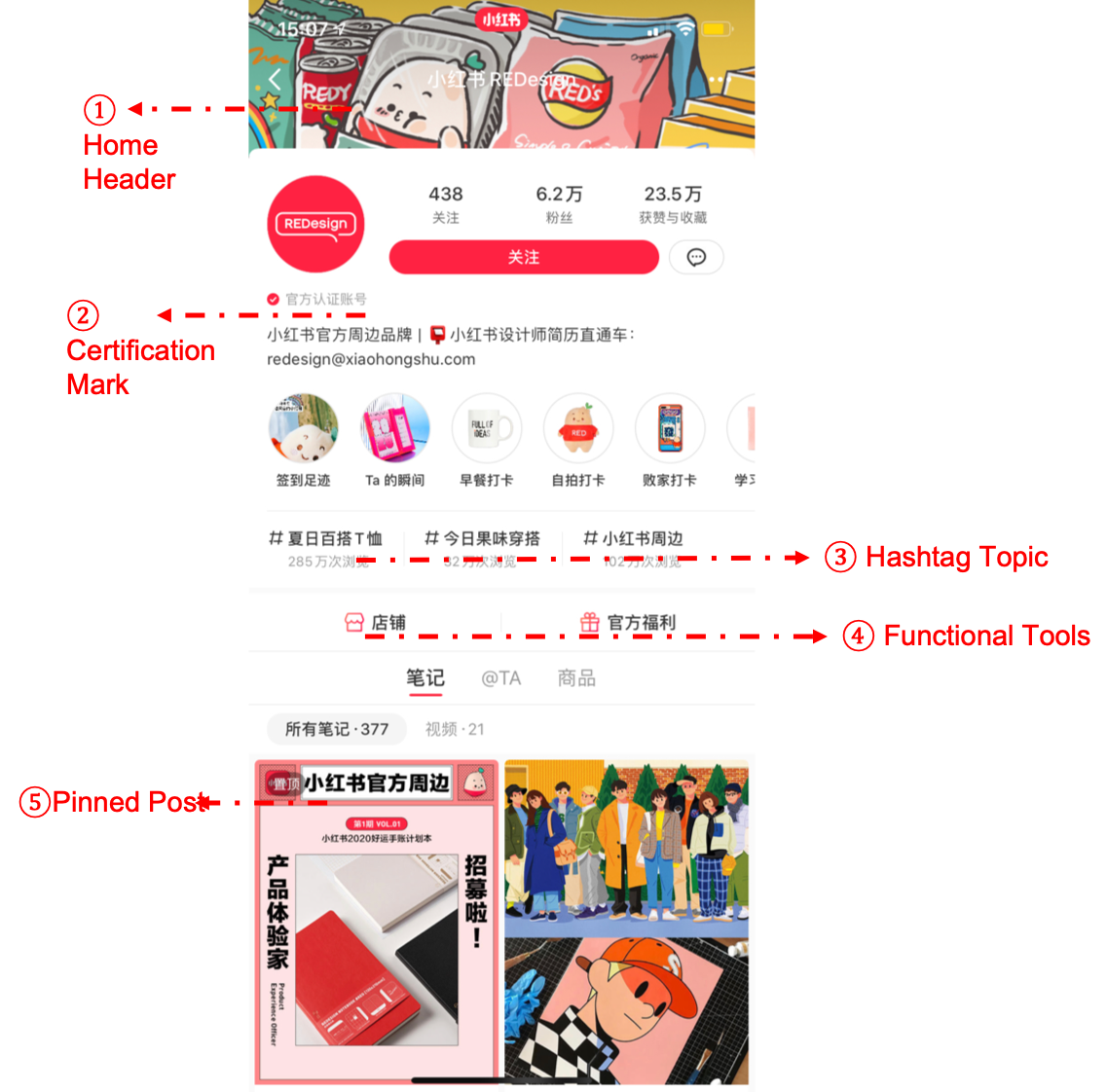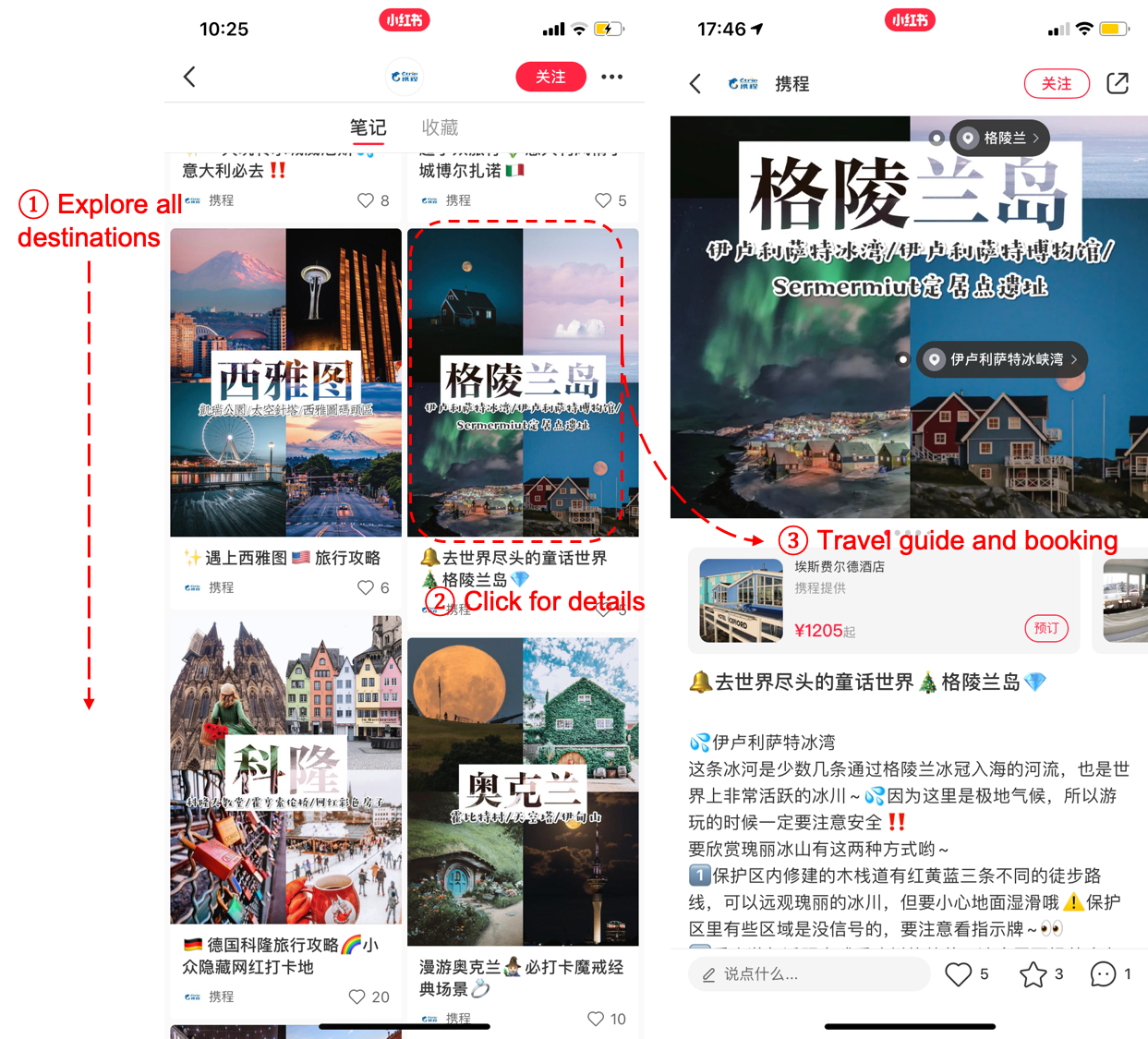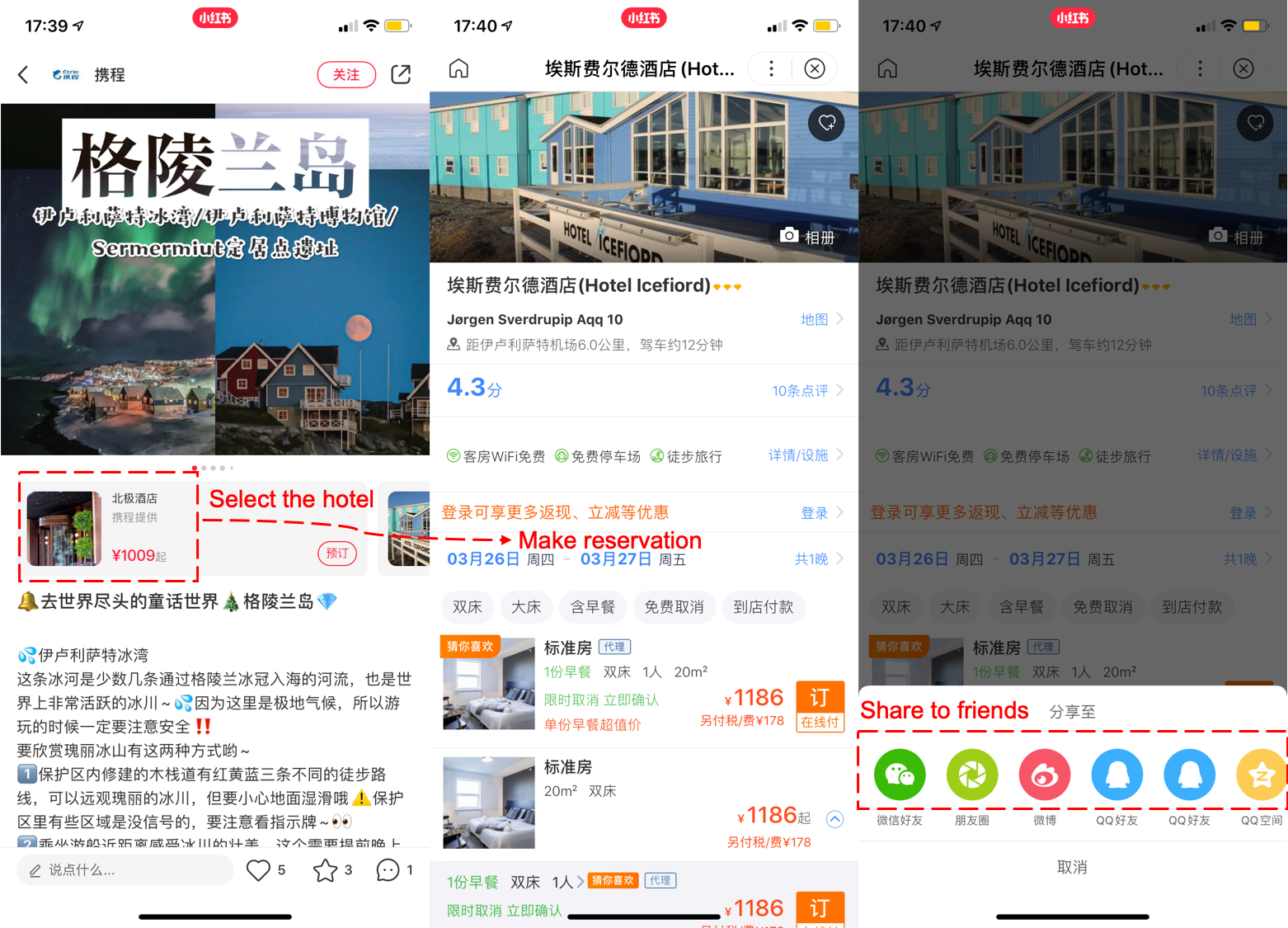Xiaohongshu Rolls Out New Enterprise Accounts for Travel Partners
by Ker Zheng & Queenie Yao
Social commerce platform Xiaohongshu announced in March that it is testing enterprise accounts, upgraded versions of official brand accounts, to create more brand marketing options for merchant partners. Thus far travel platforms have been the main beneficiaries, with Ctrip, Tujia, Muniao, Meituan Homestay having all launched enterprise accounts.
We take a deeper look at enterprise accounts and how their features can help provide a one-stop experience for its users.
Xiaohongshu Needs to Monetize its Business
Xiaohongshu started as a blogging platform, on which females post Pinterest-like updates about beauty, fashion, food, travel and more. The company boasts a registered user base of over 300 million, the majority of which are female and under the age of 30.
But social media platforms need to monetize at some point, and a few years ago Xiaohongshu turned to e-commerce to do so, enabling brands to set up their own e-commerce store. Thus far, this pivot has failed to meet expectations, due to three main reasons:
1. The logistics experience was relatively weak, as many customers reported that products were never shipped or very late.
2. It was hard to guarantee the quality of the products sold. As a premium platform where women tend to discuss premium products such as luxury, fashion, and beauty items, product quality and authenticity is of the utmost importance.
3. People never acquired the habit of shopping on Xiaohongshu, perceiving it as more of a product research tool. It’s common for users to research products on Xiaohongshu but move to a more robust platform such as Alibaba’s Tmall or JD.com to make the final purchase.
With these issues in mind, Xiaohongshu has been forced to think of alternative ways to monetize its lucrative user base.
Upgrading Official Brand Accounts to Enterprise Accounts
Xiaohongshu’s new enterprise accounts include new functional tools that enable brands to improve the e-commerce experience. Below, we take a look at Xiaohongshu Design’s official enterprise account below. Xiaohongshu Design sells XHS branded items such as notebooks and apparel to its fans.

Red’s homepage as a showcase Source: Xiaohongshu Design official account
1. The homepage is embedded with a header banner
2. It also contains an “enterprise” certification mark at the top
3. It highlights the top hashtagged topics that are related to the account. Users can click and enter to view community posts and upload their own content.
4. Functional tools include a mini-store and special benefits such as virtual gifts and coupons. This very much resembles mini-program features inside WeChat.
Next we take a look at travel booking platform Ctrip’s enterprise account. Travel is an important vertical for Xiaohongshu – after all, it did start out as a platform for people to share their travel experiences.
Chinese consumers do a lot of research on travel destinations and locales on Xiaohongshu, looking at reviews of accommodations, attractions, restaurants, shopping malls, and more.
For travellers who haven’t decided where to go yet, Ctrip’s homepage provides visitors with 130 officially curated posts on different destinations. Below, we take a look at a post about Greenland.

Ctrip Enterprise account Homepage Source: Ctrip’s Xiaohongshu account
After entering the ‘Greenland’ page, customers will have access to detailed travel guides and high-definition photos. The account also includes a location-based recommendation feature, which can be used as travellers progress from one place to the next.
Finally, Ctrip’s enterprise account enable customers to reserve hotel rooms within the Xiaohongshu app, using Alipay or WeChat Pay. This creates a link between content and commerce, creating a closed loop transaction that starts with content discovery and ends with a purchase. Such functions are not unlike those of a WeChat mini-program, and is line with the industry-wide trend that more customer journeys are beginning with content.

Greenland’s Travel Guide & Booking Functions Source: Ctrip’s Xiaohongshu account
Other minor features of the enterprise account includes data analytics, customized mobile pages, follower CRM tools, and more.
Such a partnership with Ctrip makes sense because people trust in the Ctrip brand, its customer experience having already been validated on its own official platform. Unlike working with individual brands, working with an existing platform such as Ctrip absolves Xiaohongshu of responsibility when it comes to preserving the user experience. Xiaohongshu just has to focus on preserving content quality, and doesn’t have to allocate manpower to customer service, logistics, and other operations-heavy functions that are essential to e-commerce.
Going forward it is likely that Xiaohongshu will embed more features that enable merchants to better engage customers. The new features indicate a deeper integration of online and offline marketing for merchants. Think of it as a Dianping or Yelp, but augmented with more authentic, convincing social posts and equipped with more advanced e-commerce features.
Aside from travel, Xiaohongshu will likely branch into other verticals and try to make money off of taking a cut of transactions. Whether or not this new stream of revenue will be significant remains to be seen, but these recent developments appear to be positive for the company.
Key Takeaways
1. China social commerce platform Xiaohongshu has launched new enterprise accounts for key account partners such as Ctrip, which resemble flagship mini-programs not unlike those of WeChat’s.
2. Ctrip’s account consists of official travel guides, travel booking features, and location-based recommendations for travelers on the move. Such features indicate that Xiaohongshu is making a greater effort to monetize its lucrative user base.
3. Xiaohongshu may branch into other verticals as it attempts to further monetize its business.